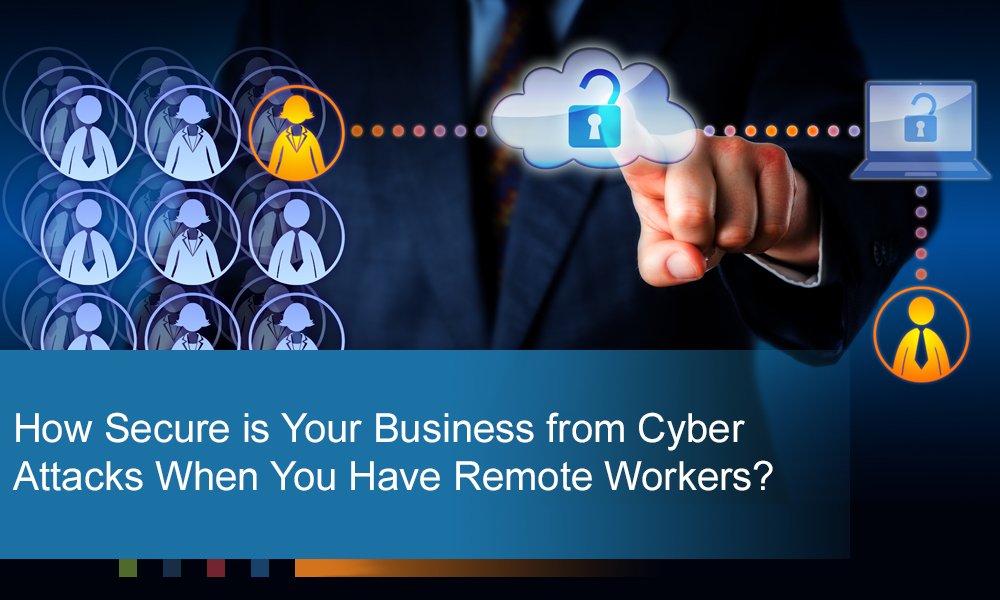The COVID-19 pandemic is the first major pandemic to strike during the digital age and has highlighted many business’ cybersecurity issues.
Of course, in the world of cybersecurity, this is nothing new. Cybercriminals have always increased their activity after disasters and other high-profile global events.
In today’s environment, more companies are turning to remote work environments to keep business operating smoothly. Remote workstations, with their lack of endpoint security, give cybercriminals a target-rich environment, allowing them to make inroads to remote computers via clever phishing attacks, ransomware, and other hacking techniques.
Businesses who have not properly prepared may find themselves at risk for data theft, malware attacks and other schemes and scams. And, workers without the proper equipment may resort to less-than-secure means of transmitting information and documents, such as text messages and screenshots to get work accomplished.
What to Be Aware of to Prevent Cyber Attacks in Remote Offices
Cybercriminals have entire arsenals of techniques they can deploy to tempt — or trick— remote employees into granting access to sensitive data. They also take full advantage of weak endpoint security to launch brute force attacks that can leave sensitive data vulnerable.
Here are a few of the ways hackers might try to take advantage of remote offices to gain entry.
- Phishing Attacks
Phishing is a scam in which criminals create an email that looks to be from an authentic source, whether originating from someone in your own company or another authority, such as the CDC.
These emails often contain links that look legitimate but are some form of malware, spyware, or ransomware.
The user clicking on the email may have no idea what they’re accessing, while the criminals behind the mail are gaining access to confidential business information such as client data and employee information.
- Unsecured Networks
While the trend toward working from home allows office staff to remain productive while maintaining social distancing protocols, it also relies on employees’ own WiFi and network capabilities, as well as their own equipment.
Some employees will have up-to-date security and encryption on their home systems, but others may not. This lack of continuity weakens endpoint security and allows hackers access to unsecured networks, enabling them to track — and steal — any data sent through the network.
- Equipment and Document Access
If your employees don’t have appropriate access to printers, scanners, and copiers, it impairs their ability to move documents smoothly among coworkers, slowing productivity and making collaboration difficult, if not impossible.
Lack of proper equipment also opens the door for employees to use unsecure methods like taking screenshots or sending photos via text messages, just to get their job done.
Not only are documents sent this way uneditable, which makes them hard to use in a business environment, but they are often sent via networks that are not secure.
For example, with text messages the service provider sends a copy to a cell tower, which stores and processes the message. It sends it on to the cell phone of the recipient and that provider also processes and stores it. While some cell providers encrypt messages not all do, meaning your data might be unencrypted for some portion of its path.
Endpoint security weaknesses like these give hackers a leg up on accessing mission-critical or sensitive data.
What Can You Do to Protect Your Remote Workers — and Your Business — from Cyber Attacks?
To keep your business productive during the current Coronavirus pandemic and your employees connected, secure and active, take some proactive steps. Check-in with your employees often and ask about gaps in workflow and technology to ensure thorough endpoint security.
Begin by having a plan in place with the right equipment, software and services ready to be deployed to an employee’s home whenever a contingency arises. Secure data connections and document access can make working from the office to remote work seamless.
Ensure your employees have access to the equipment they need such as printers, scanners, and software to edit all document types to remove the temptation to use texts and screenshots to communicate.
Leverage the power of managed services to keep mission-critical information protected, but easily available.
For example, the right document management solution will allow employees to create a work product and have it available to other members of the team securely and easily while managed print services connect employees to the right printing technology wherever they are, ensuring an uninterrupted workflow.
Let James Imaging Protect Your Wisconsin Business with State-of-the-art Managed Services
James Imaging provides a full array of equipment and services to suit the needs of both your on-premise and remotely working staff.
We provide fully integrated printers and a range of supplies for team members working from home as well as document and print management solutions that enable your staff to collaborate and share vital information while keeping it protected.
Need to secure endpoints and protect your remote office network while boosting productivity? Reach out to a professional at James Imaging Systems today and learn about our dynamic suite of secure solutions.


